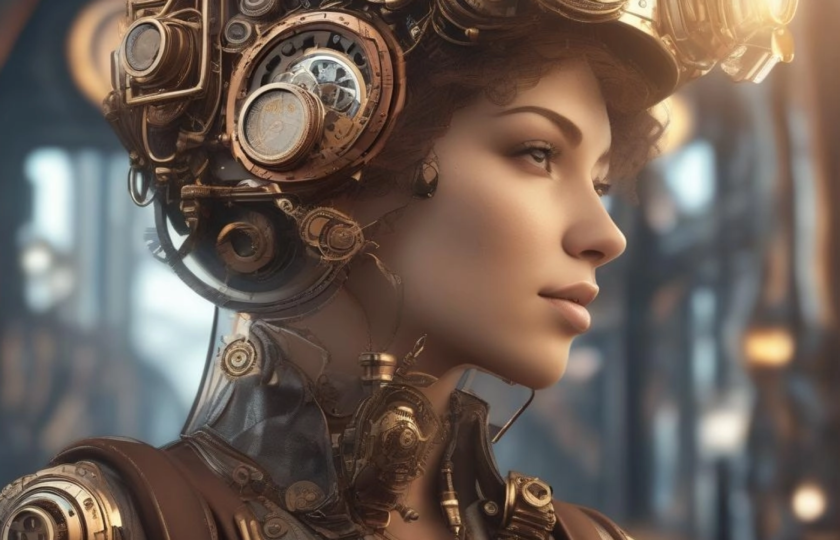As we enter a new era where technologies powered by artificial intelligence can craft and manipulate images with a precision that blurs the line between reality and fabrication, the specter of misuse looms large. Recently, advanced generative models such as DALL-E and Midjourney, celebrated for their impressive precision and user-friendly interfaces, have made the production of hyper-realistic images relatively effortless. With the barriers of entry lowered, even inexperienced users can generate and manipulate high-quality images from simple text descriptions — ranging from innocent image alterations to malicious changes. Techniques like watermarking pose a promising solution, but misuse requires a preemptive (as opposed to only post hoc) measure.

PhotoGuard uses two different “attack” methods to generate these perturbations. The more straightforward “encoder” attack targets the image’s latent representation in the AI model, causing the model to perceive the image as a random entity. The more sophisticated “diffusion” one defines a target image and optimizes the perturbations to make the final image resemble the target as closely as possible.
“Consider the possibility of fraudulent propagation of fake catastrophic events, like an explosion at a significant landmark. This deception can manipulate market trends and public sentiment, but the risks are not limited to the public sphere. Personal images can be inappropriately altered and used for blackmail, resulting in significant financial implications when executed on a large scale,” says Hadi Salman, an MIT graduate student in electrical engineering and computer science (EECS), affiliate of MIT CSAIL, and lead author of a new paper about PhotoGuard.
“In more extreme scenarios, these models could simulate voices and images for staging false crimes, inflicting psychological distress and financial loss. The swift nature of these actions compounds the problem. Even when the deception is eventually uncovered, the damage — whether reputational, emotional, or financial — has often already happened. This is a reality for victims at all levels, from individuals bullied at school to society-wide manipulation.”
PhotoGuard in practice
AI models view an image differently from how humans do. It sees an image as a complex set of mathematical data points that describe every pixel’s color and position — this is the image’s latent representation. The encoder attack introduces minor adjustments into this mathematical representation, causing the AI model to perceive the image as a random entity. As a result, any attempt to manipulate the image using the model becomes nearly impossible. The changes introduced are so minute that they are invisible to the human eye, thus preserving the image’s visual integrity while ensuring its protection.
The second and decidedly more intricate “diffusion” attack strategically targets the entire diffusion model end-to-end. This involves determining a desired target image, and then initiating an optimization process with the intention of closely aligning the generated image with this preselected target.
In implementing, the team created perturbations within the input space of the original image. These perturbations are then used during the inference stage, and applied to the images, offering a robust defense against unauthorized manipulation.
“The progress in AI that we are witnessing is truly breathtaking, but it enables beneficial and malicious uses of AI alike,” says MIT professor of EECS and CSAIL principal investigator Aleksander Madry, who is also an author on the paper. “It is thus urgent that we work towards identifying and mitigating the latter. I view PhotoGuard as our small contribution to that important effort.”
The diffusion attack is more computationally intensive than its simpler sibling, and requires significant GPU memory. The team says that approximating the diffusion process with fewer steps mitigates the issue, thus making the technique more practical.
To better illustrate the attack, consider an art project, for example. The original image is a drawing, and the target image is another drawing that’s completely different. The diffusion attack is like making tiny, invisible changes to the first drawing so that, to an AI model, it begins to resemble the second drawing. However, to the human eye, the original drawing remains unchanged.
By doing this, any AI model attempting to modify the original image will now inadvertently make changes as if dealing with the target image, thereby protecting the original image from intended manipulation. The result is a picture that remains visually unaltered for human observers, but protects against unauthorized edits by AI models.
As far as a real example with PhotoGuard, consider an image with multiple faces. You could mask any faces you don’t want to modify, and then prompt with “two men attending a wedding.” Upon submission, the system will adjust the image accordingly, creating a plausible depiction of two men participating in a wedding ceremony.
Now, consider safeguarding the image from being edited; adding perturbations to the image before upload can immunize it against modifications. In this case, the final output will lack realism compared to the original, non-immunized image.



